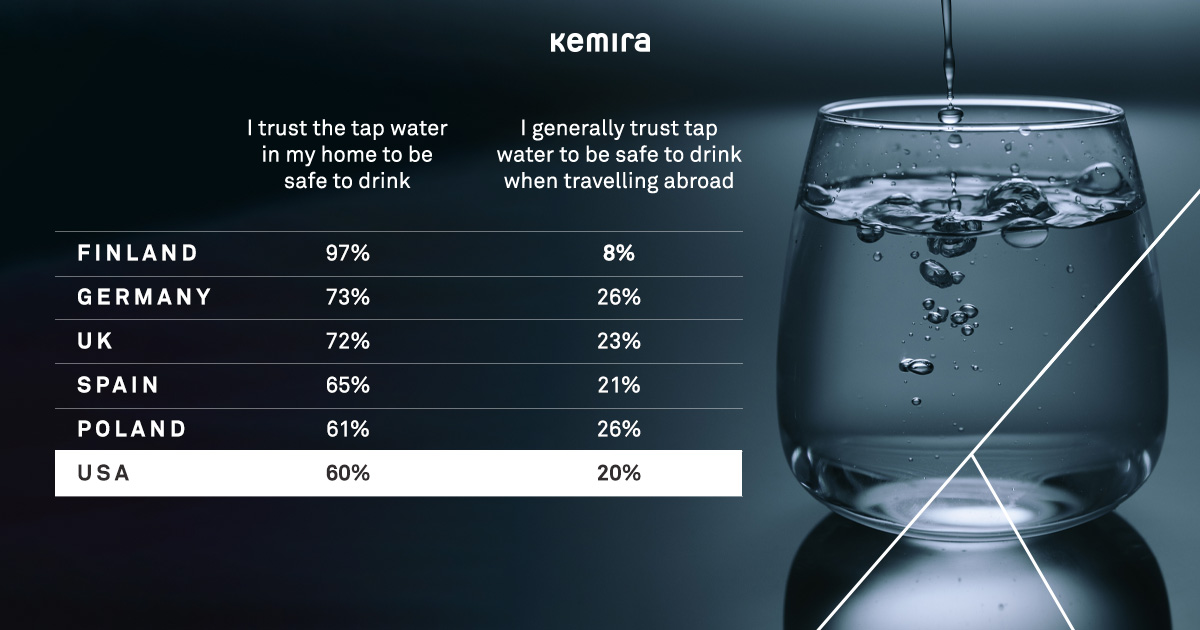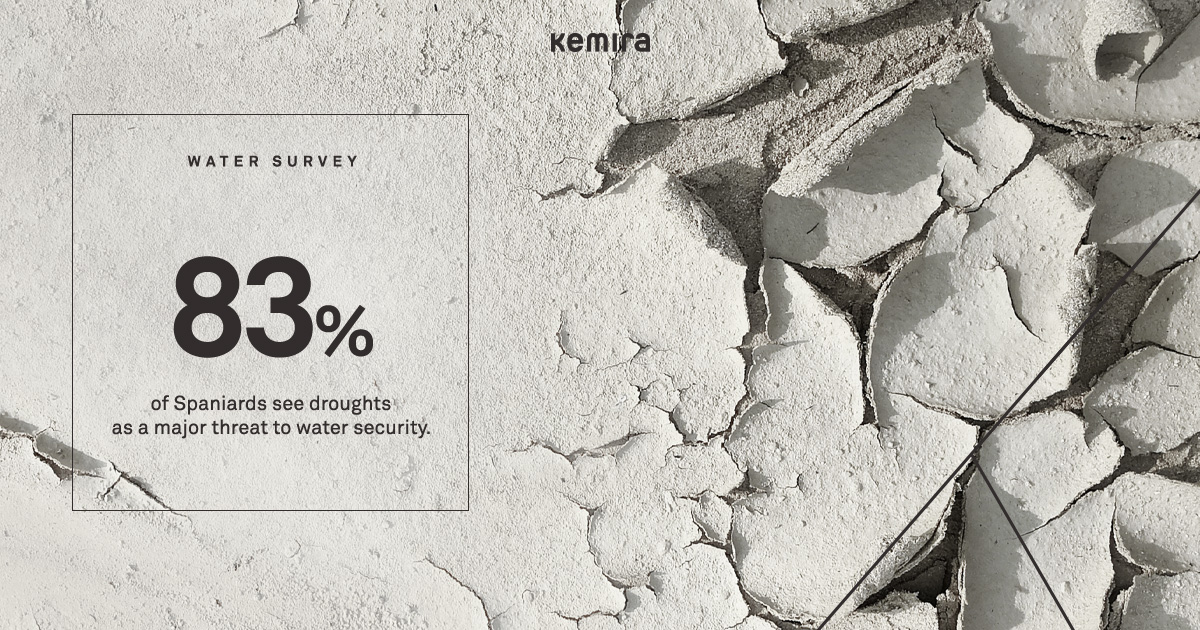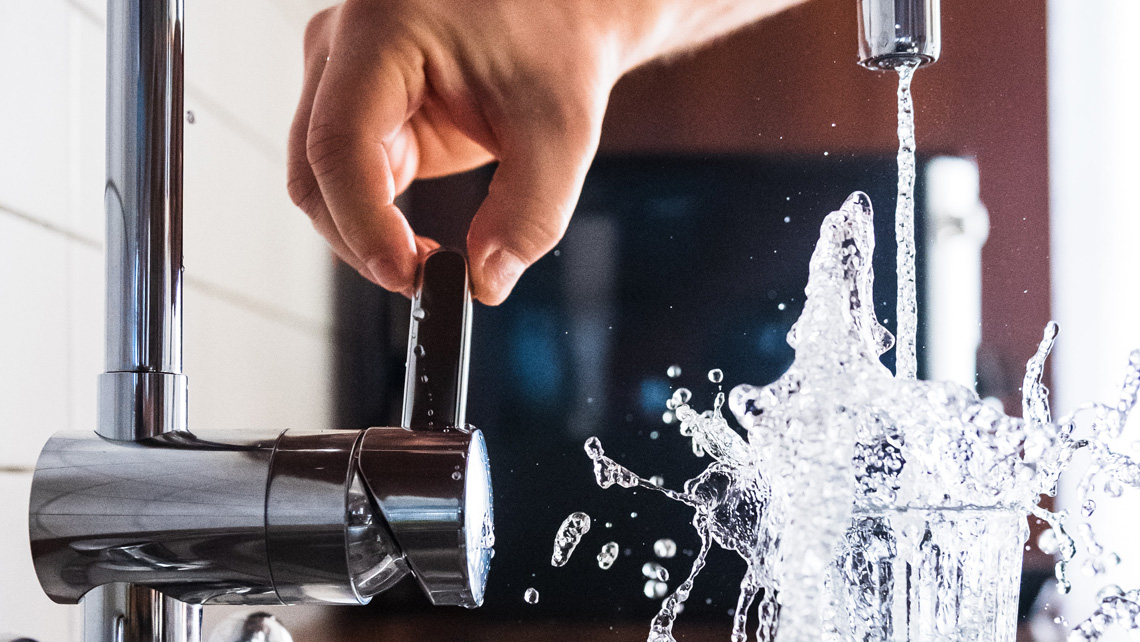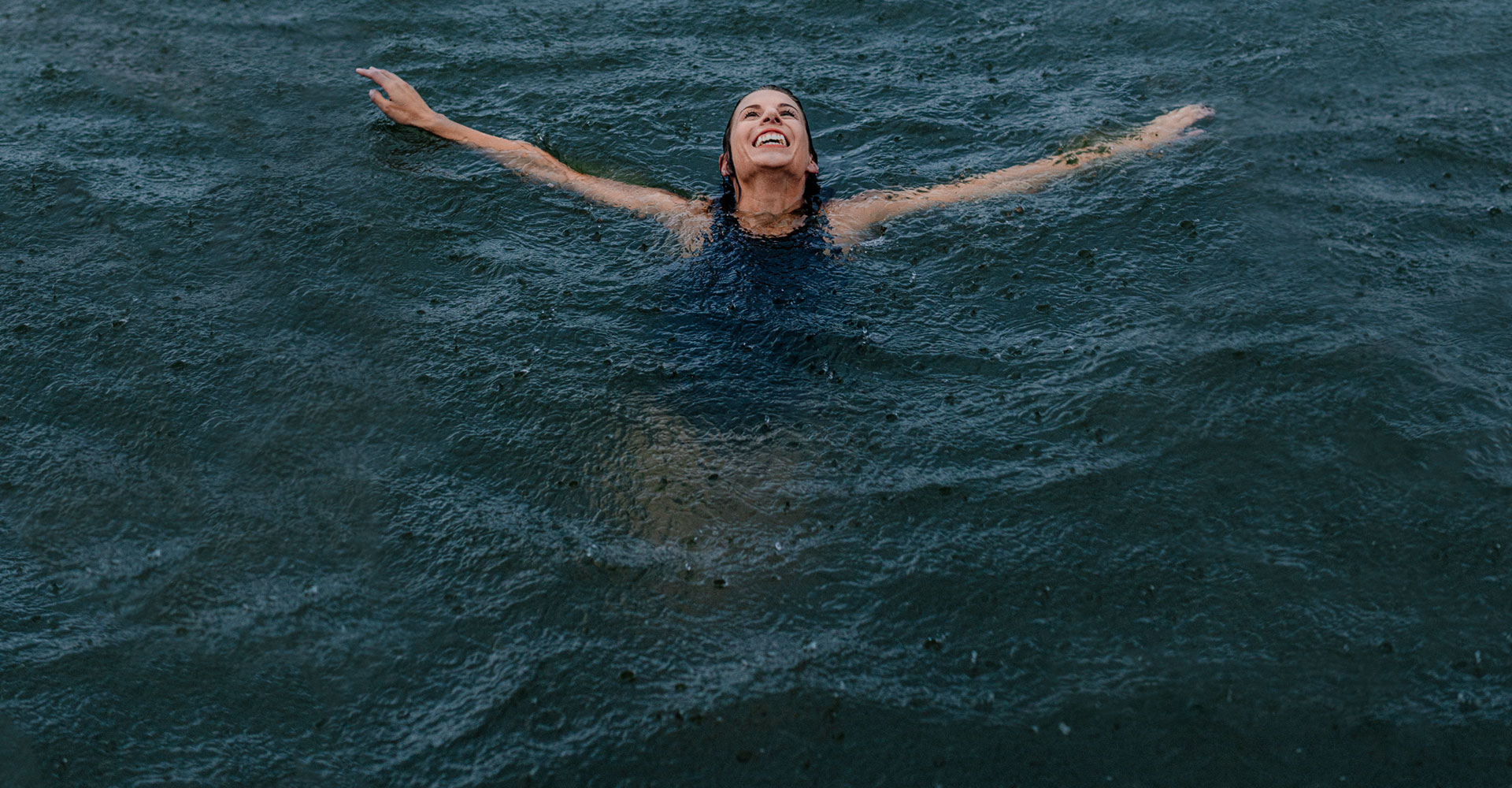At Kemira, we think about water every day. As a leading provider of water treatment chemistry, it’s our business to intimately understand the water cycle, its value and how it shapes our lives. It’s not enough to be experts on the science of water. We must be in tune with what people think ─ how water makes them feel.
That’s why we commissioned a public survey to better understand sentiments related to this precious resource. We also wanted to test their knowledge. How much do people know about the water they use every day? Could that shape their perceptions about water?
So we asked. Do people know where their tap water comes from? Or where it goes after they use it? Do they trust their water at home? How about water in other countries? What about drought, climate change and the effects on the water supply? Are they worried about contaminants, disease and micropollutants? Who do they think is responsible for water? Water companies? Governments?
Our survey included about 50 questions and 7,963 people. Now we have answers.
Insights for all stakeholders
What we found varies depending on where people live. We polled people from five European countries: Finland, Germany, Poland, Spain and the UK. We also polled seven US states (Florida, Georgia, Michigan, Minnesota, Pennsylvania, Ohio and Wisconsin). A few common themes emerged, but there were also significant differences.
By sharing the results of this survey, our goal is to help our customers, including municipal water utilities, have deeper insight into what the average person thinks about water. We also want to encourage public discussion. Why? Because taxpayers and policymakers make critical choices that impact the quality and quantity of water for years to come.
To learn more about the insights from our survey, join us for a webinar on December 9th. You can register through the link below. In the meantime, here are some of the big takeaways from the people we polled.
Low vote of confidence
Many people do not trust their drinking water at home. For example, only 61% of Poles say they trust their water for drinking. Numbers in neighboring Germany were slightly higher but still surprisingly low: 7 out of 10 Germans say they trust their drinking water. Finland was an outlier. Finns will happily drink from their kitchen tap ─ 97% trust their water.

The US had the lowest trust of the surveyed countries. 60% of Americans trust their tap water. Furthermore, Americans said that the quality of drinking water where they live is among their top concerns, only second to cost of living.
People worry about pollution
When we asked people why they distrust their drinking water, the responses varied by country. However, the most common reason was fear of contaminants and chemicals. In fact, a clear majority of people said that pollution from industries is a threat to their water supply. Interestingly, very few expressed concerns about agricultural pollution related to the water supply.

Climate change: floods and droughts
Droughts and floods were also identified as major threats in some of the countries and states we surveyed. For example, 60% of our survey respondents in the UK said floods are a threat. Meanwhile in Spain, 83% of people said that droughts are a threat. With climate change causing more frequent extreme weather, perhaps it’s not surprising that respondents in many countries noted the impact to their water supply.
Key takeaways
At Kemira, we have a few takeaways. First, we see a clear need to improve public confidence in water. Local and federal governments will have to work closely with all stakeholders to win trust by ensuring quality and transparency. Without trust, the public will not support the continuous investment required to maintain water infrastructure over the long term. Also, the general public needs to be better informed about the hard work and investment that is required in order to keep this service, which they take for granted. It is easy to ignore, as the infrastructure is out of sight, out of mind.
Second, we believe that water treatment authorities and policymakers should address people’s concerns related to pollution. In particular, authorities should tackle micropollutants such as industrial chemicals, pharmaceuticals, personal care products, cleaning agents and pesticides.
Finally, as a society, we must implement solutions for successful climate adaption. Extreme weather events are taking a toll on the water supplies in Europe, North America and around the world. Embracing proven solutions like water reuse, can ensure adequate water supplies now and well into the future.

